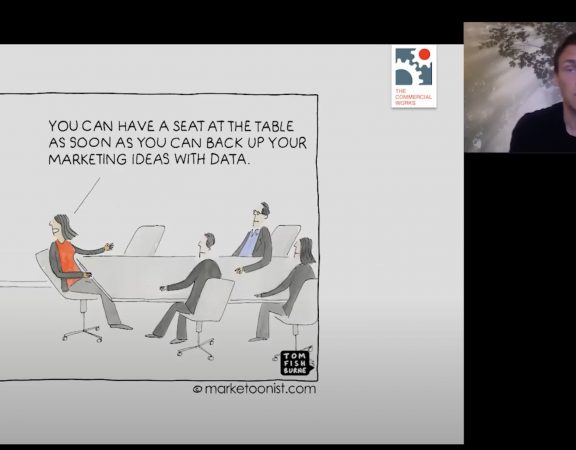One of the most widely used marketing tools is segmentation. Segmentation seems, at first sight, self-evident: people differ in their behaviour and preferences, so you should act upon this observation. It has, however, some persistent pitfalls. In this post I discuss one of those: the exaggeration fallacy.
Why segmentation
Segmentation usually starts with the observation that conventional target group definitions such as ‘female 20-45’ do not inspire action. It’s easier to think of ideas for new products or a new campaign when you are looking at the ‘Urban Career Seeker’ (save time!) or ‘Savvy Millennials’ (social media!) instead of some unimaginative socio-demographical segment.
So, we want to go beyond that and want to see how people are different in their ‘needs’, their ‘attitudes’ or ‘lifestyle’.
Looking at differences, ignoring similarities
And this is all fine: people do vary in their needs, attitudes and lifestyles. The problem starts with the fact that most of such variables are only modestly correlated with what people buy. Segments constructed based on such variables can then, at best, differentiate only modestly with what people buy. As segmentation is all about differences, we will emphasize exactly that. There will be plenty of similarities between segments, but they are often overlooked or conveniently ignored.
Segments differ because that’s what the algorithm does
On paper, segmentations usually look intuitively attractive and logical. But don’t forget that segmentation algorithms do exactly what they were made for: they create segments that are as different as possible on the variables that they get fed. If you feed the algorithm, say, lifestyle variables, then the segments it spits out will differ on lifestyle. If you feed it attitudes, the segments will differ on attitudes.
Once you start crossing those segments with socio-demographical profiles, or variables like media consumption or brand preference, the differences get much smaller, or even disappear. As we can’t ignore those small differences, we tend to exaggerate them. Segmentation is, after all, all about differences between consumer groups. An excellent way to make small differences look like bigger ones, is by using relative numbers.
Figure 1 shows an example. You see how a segment scores relatively on some socio-demographical variables. So, the visual suggests that this segment is characterized by lower educated females. Figure 2 shows what the absolute numbers look like. It shows that this segment has a bit more females who are on average a bit less educated.
Nice trick, huh?
Figure 1: Example of showing segment profile in relative numbers (Segment vs total sample)
Figure 2: Example of showing segment numbers in absolute scores
Fantasy avatars (a.k.a. personas)
Because segments are usually expressed in a bunch of numbers and therefor still very unimaginative, marketers tend to work with personas. A persona is, as the term suggest, a personification of a collection of statistical descriptors. So, the segment ‘Urban Career Seeker’ might be younger than the average consumer, a bit more urban, and a bit more likely to go out at night. The persona ‘Noah’, then, might be ‘a single 26-year old IT-consultant living in his inner-city apartment with his cat and goes out with his 3 best friends every Saturday night and goes regularly for a drink with his colleagues on weekdays’.
It might inspire communication or product innovation but be aware: your personas are likely to be segments heavily blown out of proportion. In other words, most people put in the Noah box are not like Noah at all. The result of this stereotyping is that we expect far more from segmentation than it can possibly deliver.
Fuzzy demarcations
So, your segmentation algorithm makes one segment very different from the other segment. But still, most people don’t fit neatly in one segment. Most people have characteristics of several segments.
Figure 3: How segmentations are displayed
Figure 4: How individual data points look like
Usually a segmentation model is presented like Figure 3: there are two broad dimensions, and the various segments are plotted along those. If you would plot individual people in the same way, it would look like Figure 4. I assume you see the discrepancy between the two. So, Figure 3 shows the segmentation story, Figure 4 shows the segmentation data. Don’t get me wrong, data should tell a story, otherwise it’s just, well, data. The amount of suggestion and exaggeration, however, is up for discussion. And in most segmentations a lot of suggestion and exaggeration is needed to create a compelling story.
Table 1: Example of persona profiles
Table 1 two shows some arbitrary examples of wat persona profiles could look like. If we look at Table 1, most would be inclined to look at Noah being more active on social media, while Sheila is more in need of convenience. Abdulla is less price sensitive and Layla puts in some effort before she buys.
What you tend to forget while looking at Table 1, is that most people are not buying much through social media and most people are looking for convenience. Price sensitivity is medium high for all profiles and pre-buying effort is mostly low. Table 2 shows this more clearly. It shows the same numbers, but simply by framing it differently you now realize the similarities between the personas are more dominant than the differences. Likely, the similarities have more commercial relevance than the differences.
Table 2: Same numbers as Table 1, with different colour formatting
Take outs
There are two import take outs here. First, don’t turn a blind eye for similarities between segments or personas. There will be plenty and often similarities are more important than the differences. Second, don’t expect the world from segments built around needs, benefits, attitudes, lifestyle and the like. They have only a modest correlation at best with what people buy. Segmentation could help optimize your tactics, and that’s fine. It is just not powerful enough to have strategic implications.









